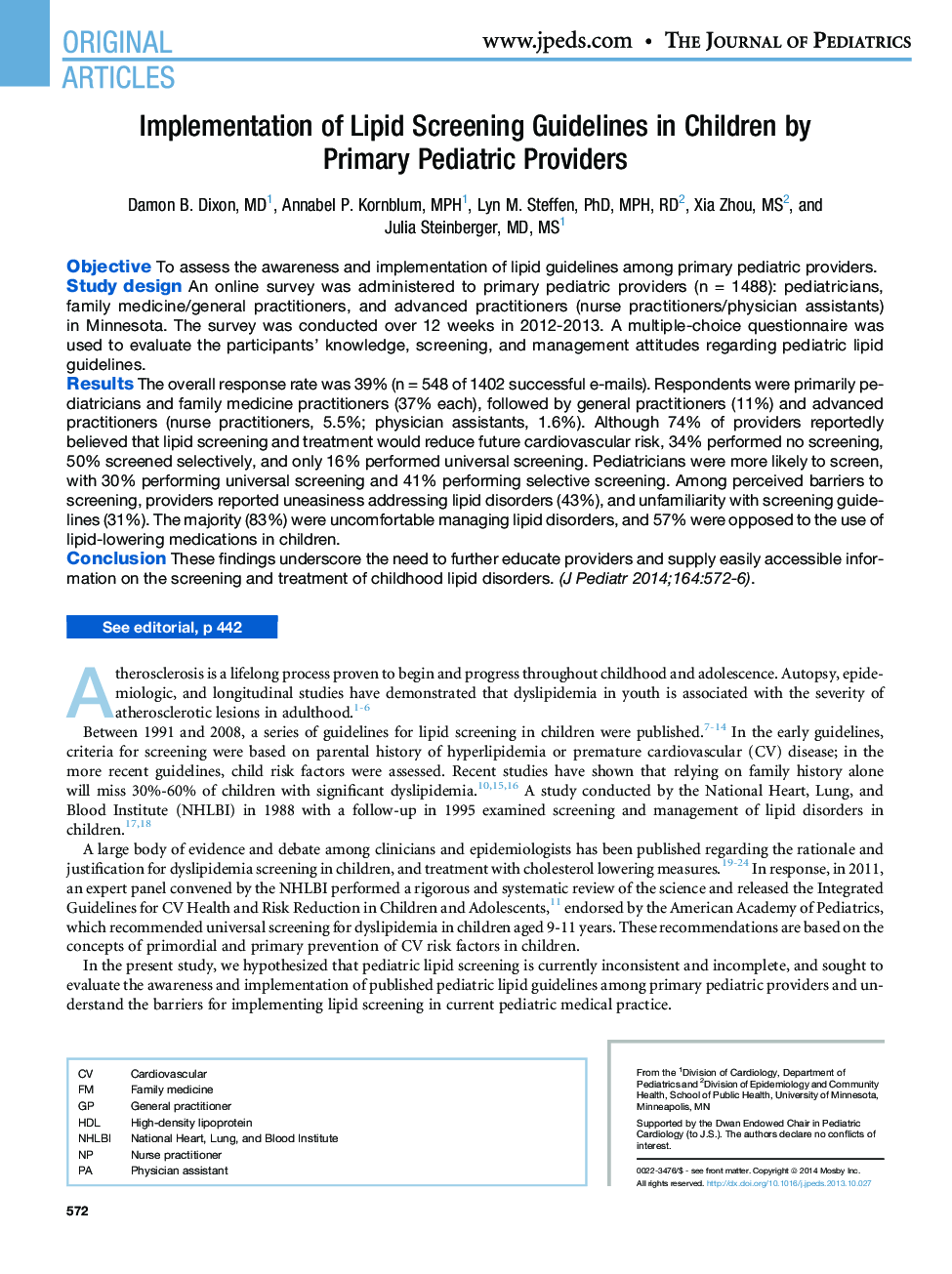| Article ID | Journal | Published Year | Pages | File Type |
|---|---|---|---|---|
| 6222625 | The Journal of Pediatrics | 2014 | 5 Pages |
ObjectiveTo assess the awareness and implementation of lipid guidelines among primary pediatric providers.Study designAn online survey was administered to primary pediatric providers (n = 1488): pediatricians, family medicine/general practitioners, and advanced practitioners (nurse practitioners/physician assistants) in Minnesota. The survey was conducted over 12 weeks in 2012-2013. A multiple-choice questionnaire was used to evaluate the participants' knowledge, screening, and management attitudes regarding pediatric lipid guidelines.ResultsThe overall response rate was 39% (n = 548 of 1402 successful e-mails). Respondents were primarily pediatricians and family medicine practitioners (37% each), followed by general practitioners (11%) and advanced practitioners (nurse practitioners, 5.5%; physician assistants, 1.6%). Although 74% of providers reportedly believed that lipid screening and treatment would reduce future cardiovascular risk, 34% performed no screening, 50% screened selectively, and only 16% performed universal screening. Pediatricians were more likely to screen, with 30% performing universal screening and 41% performing selective screening. Among perceived barriers to screening, providers reported uneasiness addressing lipid disorders (43%), and unfamiliarity with screening guidelines (31%). The majority (83%) were uncomfortable managing lipid disorders, and 57% were opposed to the use of lipid-lowering medications in children.ConclusionThese findings underscore the need to further educate providers and supply easily accessible information on the screening and treatment of childhood lipid disorders.
